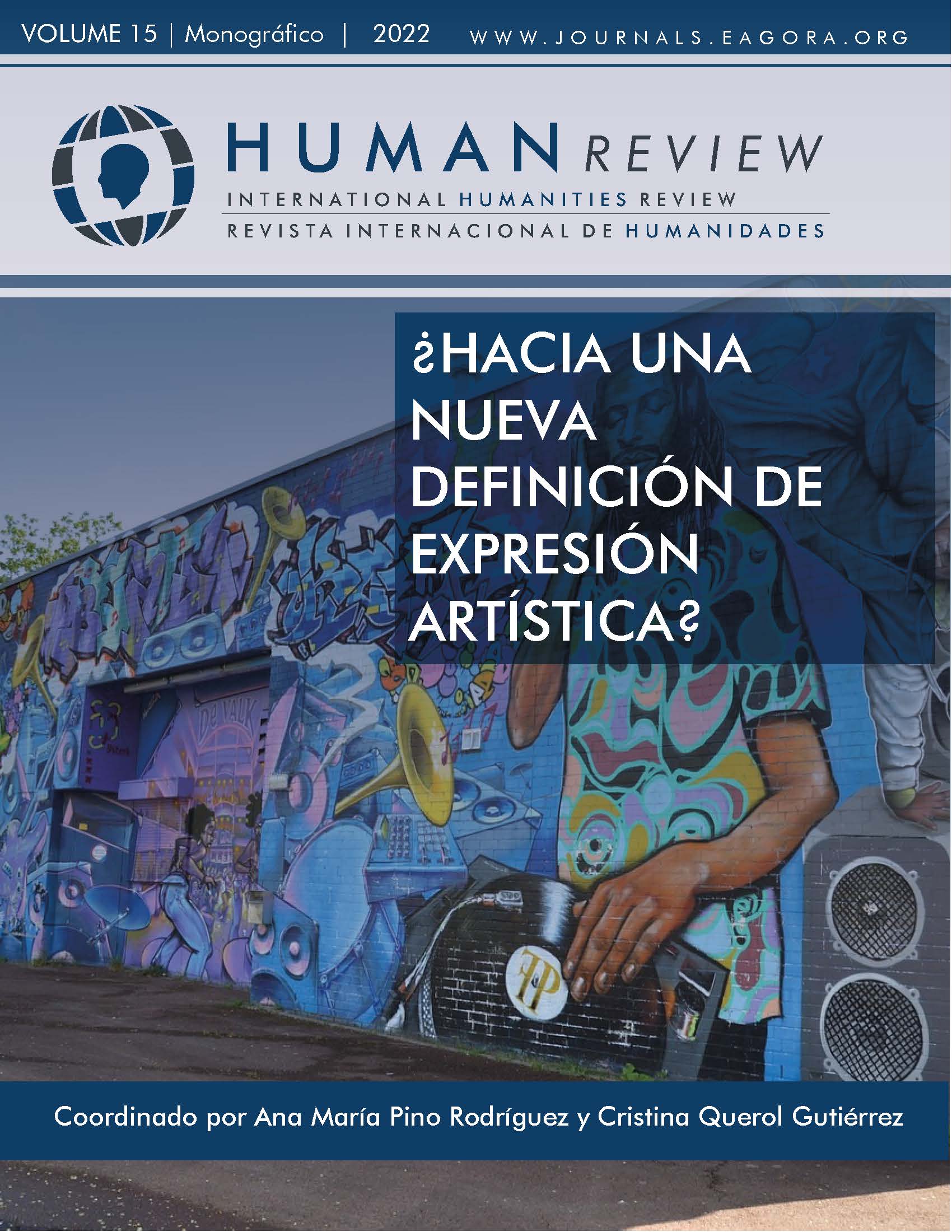The motherhood and the popular comic culture system of representation
The pregnant body into the context of Emily in Paris
DOI:
https://doi.org/10.37467/revhuman.v11.4331Keywords:
Grotesque body, Carnivalesque, Popular culture, Netflix, Feminism theory, Film Theory, RepresentationAbstract
This research is a qualitative type with a narratological approach and an analytical-synthetic method. The main object is to understand the phenomenon of motherhood’s representations and the pregnant body in the context of popular culture and comic theory through the two seasons released so far of Netflix’s series, Emily in Paris. The conclusions can be summarized in that motherhood is inscribed in the geographical and discursive margins of the romantic storytelling given in the dominant representational paradigm of France and that the pregnant body is represented through the features of the grotesque body present in popular comic culture.
References
Abellán Hernández, M. (2020). Deconstruir el amor a partir de El príncipe y la modista (2018) de Jen Wang. CEM. CULTURA, ESPAÇO & MEMÓRIA, 10, 215–230. http://www.acdcomic.
Alfeo, J.C. (2011). Análisis narratológico y sociedad representada: los personajes LGTB en el cine. En F. García García y M. Rajas (coords.) Narrativas audiovisuales: los discursos. Icono14, 63-84.
Alzar Cerezo, D. (2019). La “buena madre”. Discursos y prácticas neoliberales. Atlánticas. Revista internacional de Estudios Feministas, 4(1), 265-294 https://doi.org/10.17979/arief.2019.4.1.4336 DOI: https://doi.org/10.17979/arief.2019.4.1.4336
Bajtin, M. M. (2003). La cultura popular en la Edad Media y en el Renacimiento : el contexto de Francois Rabelais. Alianza.
Casetti, F. y Di Chio, F. (1991). Cómo analizar un film. Paidós
Díaz Galán, J. (2015). La fiesta, el deseo y la muerte. Creatividad y Sociedad, 24, 208–229. https://bit.ly/3IB7Aw6
Menéndez Gutierrez, M.A. (s.f.) Embarazos y Partos. La iconografía de carácter sexual en la plástica románica. https://bit.ly/3uJzsYZ
Gámez Fuentes, M. J. (2016). Cinematergrafía. La madre en el cine y la literatura de la democracia. Asparkia: Investigació Feminista, 27, 207–210.
Gámez Fuentes, M. J. (2001). Vista de El cuerpo materno en la cultura occidental: una aproximación a diferentes enfoques teóricos. Dossier Feministes, 5, 113–122. https://raco.cat/index.php/DossiersFeministes/article/view/102401/153623
García Jiménez, J. (2003). Narrativa audiovisual. Cátedra.
Giallorenzi, M. L. (2017). Crítica feminista sobre la noción de buena madre. Revista Reflexiones, 96(1). https://doi.org/10.15517/rr.v96i1.30634 DOI: https://doi.org/10.15517/rr.v96i1.30634
Guerrero Bejarano, M. A. (2016). La Investigación Cualitativa. INNOVA Research Journal, 1(2). https://doi.org/10.33890/innova.v1.n2.2016.7 DOI: https://doi.org/10.33890/innova.v1.n2.2016.7
Gutiérrez Galindo, B. (2017). Cuerpo materno y subjetividad (Reflexiones sobre la mirada y la pantalla). Revista Interior Gráfico de La División de Arquitectura Arte y Diseño de La Universidad de Guanajuato. https://bit.ly/39Dbvvm
Hall, S. (2003). Introduction. En Representation. Cultural representations and signifying practice. SAGE Publications, 1-11.
Hamilton, P. (2003). Representing the social: France and Frenchness in Post-War humanistic photography. En S. Hall (ed.) Representation. Cultural representations and signifying practice. SAGE Publications, 75-150.
Heredia-Ruiz, V., Quirós-Ramírez, A. C., & Quiceno-Castañeda, B. E. (2021). Netflix: catálogo de contenido y flujo televisivo en tiempos de big data. Revista de Comunicación, 20(1). https://doi.org/10.26441/rc20.1-2021-a7 DOI: https://doi.org/10.26441/RC20.1-2021-A7
Kristeva, J. (1985). Stabat Mater. Poetics Today, 6(1), 133–152. https://doi.org/https://doi.org/10.2307/1772126 DOI: https://doi.org/10.2307/1772126
Landa, M. I., & Calafell Sala, N. (2019). El cuerpo materno en la red: entre el orden de lo ’deseable`y el de lo real. Arxius de Sociología, 41, 135–156. https://bit.ly/3tT9Bxv
Leste Moyano, E. (2018). El poder del amor. Género y desigualdad en cuatro películas románticas contemporáneas. Antropología Experimental, 18. https://doi.org/10.17561/rae.v0i18.4110 DOI: https://doi.org/10.17561/rae.v0i18.4110
Marín Pérez, B. (2021). Streaming: ventajas, desafíos y oportunidades de las radiotelevisiones para captar audiencias. Revista de Ciencias de La Comunicación e Información. https://doi.org/10.35742/rcci.2021.26.e85 DOI: https://doi.org/10.35742/rcci.2021.26.e85
McKee, R. (2013). El guión. Alba Minus.
Mejía, N. (2018). Usos, hábitos, actitudes y experiencias usuario de jóvenes universitarios en el consumo audiovisual de Netflix. Aportes, 25. n25_a05.pdf (scielo.org.bo)
Mendoza Alarcón, M. de J (2020). La maternidad como decisión y construcción social. El segundo sexo de Simone de Beauvoir. Tlamatini. Mosaico Humanístico, 10, 10–20. TLAMATINI_10_A.pdf (uaemex.mx)
Netflix renueva Emily en París por una tercera y una cuarta temporada [10/01/2022]. CulturaOcio https://bit.ly/3tvcg02
Quiroz, L. (2020). “Madre solo hay una”: la invención de los modelos de la buena/mala madre en el Perú de los siglos XIX y XX. Investigaciones Feministas, 11(1). https://doi.org/10.5209/infe.63989 DOI: https://doi.org/10.5209/infe.63989
Shohat, E. & Stam, R. (2002). Multiculturalismo, cine y medios de comunicación. Crítica al pensamiento eurocéntrico. Paidós.
Star, D. (Productor ejecutivo) (2020-2021) Emily in Paris [Serie TV]. Darren Star Productions, Jax Media, MTV Entertainment Studios, MTV Studios
Downloads
Published
How to Cite
Issue
Section
License
Those authors who publish in this journal accept the following terms:
- Authors will keep the moral right of the work and they will transfer the commercial rights.
- After 1 year from publication, the work shall thereafter be open access online on our website, but will retain copyright.
- In the event that the authors wish to assign an Creative Commons (CC) license, they may request it by writing to publishing@eagora.org









